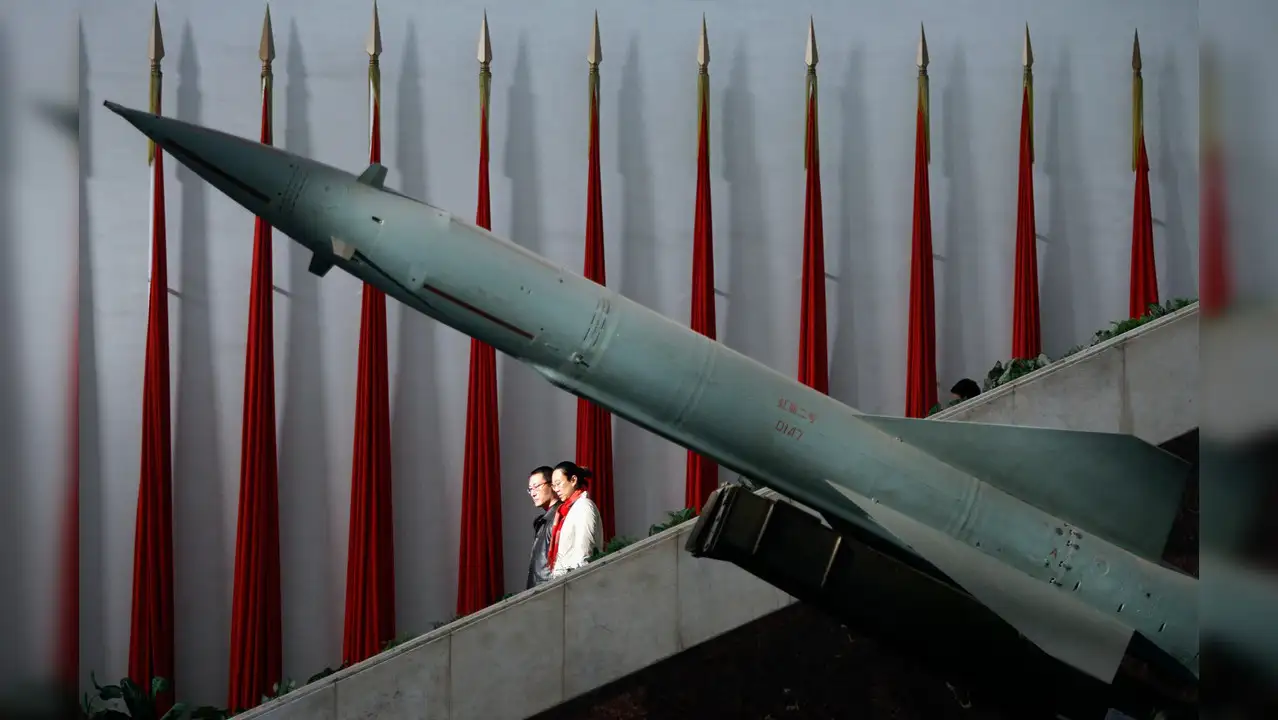By Rishabh Madhavendra Pratap
Copyright timesnownews

Beijing’s pursuit of nuclear weapons transformed Xinjiang into a wasteland of radioactive fallout, displacing entire communities, devastating the environment, and leaving generations of Uyghurs with cancers, birth defects, and poisoned lands. While China celebrated its entry into the nuclear club, it was Uyghur lives that paid the ultimate price—a silent tragedy still unfolding today. Nuclear Glory, Human Misery Between 1964 and 1996, China conducted 45 nuclear weapons tests at Lop Nur in Xinjiang, converting nearly 100,000 sq km of desert into the world’s largest nuclear testing ground. Officials claimed the site was “barren and isolated, without permanent residents,” wilfully ignoring the Uyghur herders and farmers who had lived there for centuries. The fallout was catastrophic. Researchers estimate Lop Nur released six million times more radioactive material into the atmosphere, soil, and water than Chernobyl. Twenty-three atmospheric tests carried out between 1964 and 1980 created radioactive clouds that lingered over villages, spreading plutonium-239—an isotope so lethal that even a millionth of a gram can trigger cancer. The Deadly Toll Japanese physicist Jun Takada’s studies estimate nearly 200,000 people were killed by China’s nuclear programme. Around 1.48 million were exposed to fallout, turning entire generations of Uyghurs into unwilling test subjects for Beijing’s nuclear ambitions. Cancer rates in Xinjiang soared to 30–35% above China’s national average. Hospitals reported that 9 out of 10 cancer patients suffered from blood or lymphatic cancers linked directly to radiation. Uyghur oncologist Dr Enver Tohti documented alarming rates of radiation-induced lymphomas. Yet while Chinese soldiers stationed at Lop Nur received quiet compensation, Uyghur victims were abandoned. Many were left to “wait to die,” unable to afford treatment—a chilling example of discriminatory neglect. A Landscape Poisoned The nuclear programme not only ravaged people but also the environment. Around 20,000 sq km of ancestral grazing and farming lands were permanently seized, uprooting nomadic traditions. Contamination spread into water supplies, soil, and vegetation, making vast areas uninhabitable. Radiation travelled far beyond Xinjiang. Fallout reached as far as Kazakhstan, where border villages reported elevated cancer rates. Within Xinjiang, the release of 48 kg of plutonium-239—a substance with a half-life of 24,000 years—ensured that contamination would endure for centuries. Nuclear Weapons as Party Prestige China’s nuclear programme was always about more than defence—it was about prestige and political legitimacy. Mao Zedong declared that without atomic bombs, “imperialist countries look down on us.” His successors reinforced the idea that nuclear capability was central to China’s status as a great power. Xinjiang was the chosen sacrifice zone. By conducting tests in a remote, marginalised region, the Communist Party externalised the costs of its nuclear ambitions onto an ethnic minority it already treated as expendable. India’s Restraint vs China’s Recklessness India’s nuclear trajectory offers a sharp contrast. New Delhi pursued nuclear capability under a doctrine of restraint—“No First Use” and “credible minimum deterrence.” India’s tests in remote parts of Rajasthan minimised civilian exposure, unlike China’s atmospheric detonations that blanketed populated Uyghur villages with fallout. India’s democratic oversight also prevented secrecy on the scale of Lop Nur. Beijing’s authoritarian system allowed three decades of secret testing, shielded from scrutiny, in which an entire ethnic community was collateral damage. Silencing the Voices of Protest Uyghurs resisted. In December 1985, thousands of students protested in Urumqi against nuclear testing, linking it to environmental destruction and health crises. The protests spread to Beijing and Shanghai. Beijing’s response was brutal: protesters were investigated, punished, and silenced. Thirteen more tests followed after 1985. The Party ignored Uyghur pleas, foreshadowing today’s mass repression in Xinjiang. The logic was the same: Uyghur lives were irrelevant to Beijing’s pursuit of power. Legacy of Nuclear Colonialism China’s nuclear testing in Xinjiang was not just science—it was colonial exploitation. Uyghur lands were treated as sacrifice zones, their people as disposable. Cancer clusters, poisoned soil, and displaced communities are the radioactive legacy of Beijing’s rise as a nuclear power. The parallels with today’s repression are stark. The same mentality that once sacrificed Uyghur lives to mushroom clouds now drives cultural erasure, demographic engineering, and mass detention. Xinjiang’s nuclear scars are not history—they are a reminder of how China’s pursuit of power has always come at the cost of its most vulnerable. As Beijing modernises its arsenal and builds new facilities at Lop Nur, the world must confront the lessons of Xinjiang’s tragedy. For the 194,000 Uyghur victims of nuclear testing, recognition is long overdue—not as collateral damage, but as proof of a regime that has always seen human lives as expendable in its pursuit of global power.



